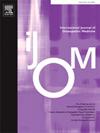Specific osteopathic diagnosis of unilateral knee pain in an elite sprinter: a case report
IF 1.5
4区 医学
Q2 MEDICINE, GENERAL & INTERNAL
引用次数: 0
Abstract
This publication presents the case of a 25-year-old French high-level sprinter. He was referred for left gonalgia (knee pain), which had appeared during training a few weeks earlier and for which there was no clear traumatic cause. The athlete's medical team initially thought that he had suffered damage to his infrapatellar tendon. Despite implementing a combination of physiotherapy and allopathic medicine, the pain persisted and ultimately led to a state of disability. During the initial osteopathic consultation, the clinical examination was not very informative and did not reveal any pathognomonic signs. However, it appeared that the patient had external rotation of the tibia below the femur on the left, firmly maintained by a clear asymmetry of tone between the biceps femoris and the other left hamstrings. In the search for an aetiology, this asymmetry was explored with the sprinter's physical training staff. The athlete and his team of physical trainers determined that he was approaching curved trajectories with the left foot a little too wide open, causing shearing of the knee joint complex. Remediation of the running movements subsequently resolved the pain. The authors advocate for greater emphasis on functional diagnosis in osteopathic treatment.
精锐短跑运动员单侧膝关节疼痛的具体骨科诊断:1例报告
本出版物介绍了一个25岁的法国高水平短跑运动员的案例。他被诊断为左侧性腺痛(膝盖疼痛),这是在几周前的训练中出现的,没有明确的创伤原因。运动员的医疗团队最初认为他的髌下肌腱受伤了。尽管实施了物理疗法和对抗疗法的联合治疗,但疼痛持续存在,最终导致残疾。在最初的骨科会诊期间,临床检查并没有提供非常有用的信息,也没有显示任何病理体征。然而,患者左侧股骨下方的胫骨出现了外旋,并被股二头肌和其他左腘绳肌之间明显的不对称张力牢牢地维持着。在寻找病因的过程中,我们与这位短跑运动员的体能训练人员探讨了这种不对称。这位运动员和他的体能教练团队认为,他在接近弯曲的轨迹时,左脚开得有点太大,导致膝关节复合物断裂。对跑步动作的纠正随后缓解了疼痛。作者主张在骨科治疗中更重视功能诊断。
本文章由计算机程序翻译,如有差异,请以英文原文为准。
求助全文
约1分钟内获得全文
求助全文
来源期刊
CiteScore
2.20
自引率
36.80%
发文量
42
审稿时长
3 months
期刊介绍:
The International Journal of Osteopathic Medicine is a peer-reviewed journal that provides for the publication of high quality research articles and review papers that are as broad as the many disciplines that influence and underpin the principles and practice of osteopathic medicine. Particular emphasis is given to basic science research, clinical epidemiology and health social science in relation to osteopathy and neuromusculoskeletal medicine.
The Editorial Board encourages submission of articles based on both quantitative and qualitative research designs. The Editorial Board also aims to provide a forum for discourse and debate on any aspect of osteopathy and neuromusculoskeletal medicine with the aim of critically evaluating existing practices in regard to the diagnosis, treatment and management of patients with neuromusculoskeletal disorders and somatic dysfunction. All manuscripts submitted to the IJOM are subject to a blinded review process. The categories currently available for publication include reports of original research, review papers, commentaries and articles related to clinical practice, including case reports. Further details can be found in the IJOM Instructions for Authors. Manuscripts are accepted for publication with the understanding that no substantial part has been, or will be published elsewhere.

 求助内容:
求助内容: 应助结果提醒方式:
应助结果提醒方式:


